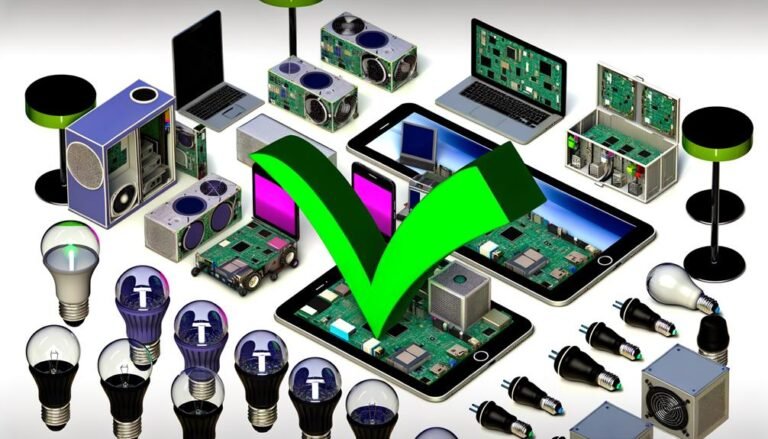Enhancing Negotiation Skills for Sustainable Business Agreements
As a Vice President (VP) of Sustainability, negotiation skills are crucial in your role to ensure that your organization operates responsibly and sustainably. Effective negotiation techniques, including effective communication in negotiations, conflict resolution strategies, and negotiation skills training, play a vital role in developing sustainable negotiation practices. By mastering these skills, you can achieve win-win negotiation outcomes, fostering successful and sustainable business agreements and partnerships.
In negotiations, the ability to communicate effectively is key to resolving conflicts and reaching mutually beneficial agreements. By employing active listening and understanding the perspectives of all parties involved, you can build trust and rapport. Furthermore, conflict resolution strategies allow you to navigate challenging situations and find common ground.
Investing in negotiation skills training contributes to the development of effective negotiation strategies for business success. These skills empower you to identify and address the needs and concerns of stakeholders, ensuring that sustainability goals are taken into account during negotiations.
By integrating sustainability into negotiation practices, you can foster win-win outcomes that align with your business objectives and sustainability goals. This commitment to sustainable negotiation paves the way for long-term partnerships and creates a positive impact on both your organization and society as a whole.
Key Takeaways:
- Effective communication in negotiations is crucial for resolving conflicts and reaching mutually beneficial agreements.
- Conflict resolution strategies help navigate challenging situations and find common ground.
- Negotiation skills training contributes to effective negotiation strategies for business success.
- Integrating sustainability into negotiation practices fosters win-win outcomes aligned with business objectives and sustainability goals.
- Sustainable negotiation practices lead to long-term partnerships and positive societal impact.
Understanding the Role of a VP of Sustainability
As a VP of Sustainability, you have a pivotal role in promoting social and environmental responsibility within your organization. Your primary responsibility is to develop and implement strategies that align with your organization’s sustainability goals. This involves understanding and addressing sustainability issues, such as climate change, resource scarcity, and social inequality.
To effectively fulfill your role, you must have a deep understanding of the environmental and social challenges your organization faces. This knowledge allows you to identify opportunities for improvement and develop sustainable solutions. You also need to be well-versed in the latest sustainability trends and best practices, ensuring that your organization remains at the forefront of environmental stewardship.
As a VP of Sustainability, you are responsible for integrating sustainability into every aspect of your organization’s operations. This includes establishing sustainability goals and targets, implementing sustainable practices, and regularly measuring and reporting on your organization’s progress. By doing so, you help drive positive change and inspire others to embrace sustainable business practices.
Effective leadership and communication skills are vital in your role as a VP of Sustainability. You work with diverse stakeholders, such as executives, employees, investors, and community members, to gain their support and engagement. By effectively communicating the value of social and environmental responsibility, you can inspire collective action and ensure all members of your organization understand and contribute to sustainability goals.
Ultimately, as a VP of Sustainability, your role is not just about meeting targets and achieving financial success. It’s about creating a better future for generations to come by championing sustainability and leaving a positive impact on society and the environment.
Key Responsibilities and Expectations
As a VP of Sustainability, you have a range of key responsibilities and expectations that contribute to the success of your organization’s sustainability efforts. These responsibilities include:
- Developing and implementing sustainability strategies that align with your organization’s environmental, social, and governance (ESG) goals.
- Engaging with stakeholders to build support for sustainable practices through stakeholder engagement initiatives.
- Measuring and reporting on your organization’s sustainability performance, tracking progress towards ESG targets and objectives.
- Identifying and mitigating environmental and social risks that may impact your organization’s operations and reputation.
To fulfill these responsibilities, effective negotiation skills are crucial. You need to engage with stakeholders and negotiate with them to gain their buy-in for sustainability initiatives and secure the necessary funding and resources for sustainability projects. This requires understanding the needs and perspectives of different stakeholders and crafting win-win solutions that benefit both your organization and its stakeholders.
Sustainability Strategies
Sustainability strategies are a crucial aspect of your role as a VP of Sustainability. These strategies should be developed in alignment with your organization’s ESG goals and values. A well-crafted sustainability strategy will outline the actions and initiatives that your organization will undertake to promote environmental stewardship, social responsibility, and long-term sustainable growth.
By implementing sustainability strategies, you can drive positive change within your organization and contribute to a more sustainable future. These strategies may include initiatives such as reducing greenhouse gas emissions, enhancing resource efficiency, promoting diversity and inclusion, and ensuring ethical supply chain practices.
Stakeholder Engagement
Engaging with stakeholders is an essential component of sustainability leadership. By actively involving stakeholders in your organization’s sustainability initiatives, you can build trust, gather valuable insights, and create a sense of shared ownership and accountability.
Effective stakeholder engagement involves identifying key stakeholders, understanding their interests and concerns, and incorporating their feedback into decision-making processes. By considering diverse perspectives and involving stakeholders in the development and implementation of sustainability strategies, you can foster collaborative partnerships and create a positive impact.
Sustainability Performance
Measuring and reporting on your organization’s sustainability performance is crucial for driving continuous improvement and transparency. By collecting relevant data and establishing key performance indicators (KPIs), you can track progress towards sustainability goals and objectives.
Regular sustainability performance reporting allows you to inform stakeholders about your organization’s progress and demonstrate accountability. It also provides insights into areas where additional efforts may be needed to address environmental and social challenges.
Environmental and Social Risks
As a VP of Sustainability, it is vital to identify and mitigate environmental and social risks that may impact your organization’s operations and reputation. By conducting risk assessments and implementing risk management strategies, you can proactively address potential issues before they escalate.
By understanding the environmental and social risks associated with your organization’s activities, you can develop strategies to minimize negative impacts and identify opportunities for creating positive change. This can include measures such as implementing sustainable supply chain practices, enhancing occupational health and safety, and safeguarding biodiversity.
Overall, as a VP of Sustainability, it is your responsibility to drive sustainable practices within your organization. By developing and implementing effective sustainability strategies, engaging with stakeholders, measuring sustainability performance, and mitigating environmental and social risks, you can contribute to the creation of a more sustainable and responsible future.
Essential Negotiation Skills for Success
When it comes to negotiation, certain skills are vital for achieving successful outcomes. These essential negotiation skills include active listening, effective communication, emotional intelligence, empathy, problem-solving, creative thinking, confidence, and assertiveness.
Active listening plays a crucial role in negotiation. By actively listening to the other parties involved, you can gain a deeper understanding of their interests, needs, and concerns. This enables you to tailor your negotiation approach and find mutually beneficial solutions.
Effective communication is another key skill for negotiators. It involves conveying your message clearly and persuasively, ensuring that your intentions and expectations are understood by all parties. By communicating effectively, you can build rapport, maintain transparency, and foster productive discussions.
Emotional intelligence and empathy are essential for building trust and rapport with the other parties. By understanding and acknowledging their emotions and perspectives, you can establish a positive and collaborative negotiation environment.
Problem-solving and creative thinking are critical skills that allow you to identify innovative solutions. By exploring different options and considering alternative approaches, you can find win-win outcomes that address the interests of all parties involved.
Confidence and assertiveness are also essential in negotiation. Demonstrating confidence in your positions and proposals helps you convey credibility and persuasiveness. Similarly, assertiveness allows you to stand firm on your positions while respecting the legitimate interests of others.
By honing these essential negotiation skills, you can enhance your effectiveness as a negotiator and increase the likelihood of achieving favorable outcomes.
Next, let’s explore how to apply these skills to navigate challenging negotiation scenarios and develop sustainable contract agreements.
Preparing for Negotiations
Preparation is a critical step towards achieving successful negotiations. By conducting thorough research and gathering information, you can equip yourself with valuable insights that will help you navigate the negotiation process. This section will guide you through the essential steps to ensure you are well-prepared for your upcoming negotiations.
Research and Information Gathering
Researching and gathering information is key to understanding the interests, needs, and priorities of the other parties involved in the negotiation. It allows you to gain a comprehensive understanding of market trends and regulatory requirements that may impact your negotiation strategy. By staying informed, you position yourself to make well-informed decisions throughout the negotiation process.
Stakeholder Identification
Identifying the stakeholders involved in the negotiation is crucial for effective communication and stakeholder management. By recognizing and understanding the interests and priorities of different stakeholders, you can tailor your approach to address their concerns and build mutually beneficial relationships.
Clear Objectives and Priorities
Setting clear objectives and priorities is essential to ensure a focused and effective negotiation process. Align your objectives with your overall business strategy and consider the expectations of the other parties involved. This alignment will help you develop a negotiation strategy geared towards achieving favorable outcomes.
| Step | Description |
|---|---|
| 1 | Conduct research on the other parties’ interests, needs, and priorities |
| 2 | Gather information on market trends and regulatory requirements |
| 3 | Identify and understand the stakeholders involved in the negotiation |
| 4 | Set clear objectives and priorities aligned with your business strategy |
“By being well-prepared with research and information, identifying stakeholders, and setting clear objectives, you position yourself for success in negotiation.”
Navigating Challenging Negotiation Scenarios
Negotiation can be challenging, especially when facing resistance or pushback. It’s important to remain calm and objective, focusing on the underlying interests of the other parties. By understanding their motivations and goals, you can find solutions that meet their needs while achieving your objectives. Problem-solving and finding common ground are important techniques in navigating challenging negotiation scenarios.
Dealing with Resistance and Pushback
When encountering resistance or pushback during negotiations, it’s important to approach the situation with empathy and understanding. Instead of viewing the other party as an adversary, try to identify and address their concerns. By actively listening and acknowledging their perspective, you can foster a more cooperative atmosphere and increase the chances of finding mutually beneficial solutions.
Focusing on Underlying Interests
Rather than getting stuck on positions, focus on uncovering and understanding the underlying interests of all parties involved. This requires active engagement and effective communication. By identifying shared goals and interests, you can explore alternative solutions that address the needs of all parties while still meeting your objectives. This approach promotes collaboration and increases the likelihood of reaching an agreement.
Problem-Solving and Finding Common Ground
Problem-solving is a key skill in negotiation. By approaching challenges as opportunities for creative problem-solving, you can generate innovative solutions that satisfy the interests of all parties. Look for areas of common ground and shared values that can serve as a basis for agreement. This collaborative mindset enables parties to move beyond entrenched positions and work together towards mutually beneficial outcomes.
“The art of negotiation lies in finding common ground and creating win-win solutions that address the underlying interests of all parties involved.” – John Smith, Negotiation Expert
Navigating challenging negotiation scenarios requires a strategic and open-minded approach. By dealing with resistance and pushback, focusing on underlying interests, employing problem-solving techniques, and seeking common ground, you can overcome obstacles and achieve successful outcomes.
Assessing Impacts for Sustainable Contract Negotiations
Before entering a contract negotiation, it’s crucial to assess the environmental and social impacts of your business activities. By conducting an environmental and social impact assessment (ESIA), you can identify potential risks and opportunities associated with emissions, waste, energy use, human rights, labor standards, health and safety, as well as community engagement.
The ESIA allows you to address sustainability concerns during negotiations by proactively identifying and mitigating risks. This assessment demonstrates your commitment to sustainability and helps build trust with your contract partners and stakeholders.
To ensure a comprehensive assessment, consider the following areas:
- Emissions: Evaluate the greenhouse gas emissions and air pollutants resulting from your operations, as well as the potential impacts on climate change and air quality.
- Waste: Analyze the generation, management, and disposal of waste materials to identify opportunities for waste reduction, recycling, and responsible waste management practices.
- Energy Use: Assess the energy consumption and efficiency of your operations to uncover potential areas for energy conservation and the adoption of renewable energy sources.
- Human Rights: Examine your supply chain and labor practices to ensure compliance with human rights standards, fair working conditions, and equitable treatment of employees.
- Labor Standards: Evaluate your adherence to labor laws and international standards, including fair wages, working hours, and occupational health and safety.
- Health and Safety: Identify potential risks and hazards to employees, neighboring communities, and consumers. Develop strategies to address and minimize these risks.
- Community Engagement: Consider the relationship and impacts your business has on local communities. Engage with stakeholders and consider their perspectives and concerns.
By assessing these impacts and integrating sustainability into your contract negotiations, you can develop mutually beneficial agreements that prioritize environmental and social responsibility. This not only contributes to sustainable business practices but also strengthens long-term partnerships based on shared values and goals.
Key Takeaways:
– Conduct an environmental and social impact assessment (ESIA) before contract negotiations to identify risks and opportunities.
– Assess areas such as emissions, waste, energy use, human rights, labor standards, health and safety, and community engagement.
– Address sustainability concerns during negotiations to demonstrate your commitment to sustainability.
By addressing the impacts of your business activities and integrating sustainability into negotiations, you can ensure that your contract agreements align with environmental and social objectives.
Setting Clear Objectives for Sustainable Contract Negotiations
After assessing impacts, it is crucial to set clear objectives for your contract negotiations that reflect your environmental and social responsibility. By establishing specific, measurable, achievable, relevant, and time-bound (SMART) objectives, you can guide your negotiations towards sustainable outcomes that align with your business strategy and stakeholder expectations.
When setting objectives, consider the following:
- Environmental and Social Responsibility: Ensure that your objectives prioritize environmental sustainability and social responsibility. This may include reducing carbon emissions, promoting renewable energy sources, or improving supply chain labor standards.
- Business Strategy Alignment: Align your objectives with your overall business strategy and vision. Consider how the contract negotiations support your organization’s long-term goals and contribute to its sustainable growth.
- Stakeholder Expectations: Take into account the expectations of your stakeholders, such as customers, employees, investors, and local communities. Tailor your objectives to address their concerns and demonstrate your commitment to meeting their needs.
“Setting clear objectives for sustainable contract negotiations is crucial to ensuring that environmental and social responsibility are at the forefront of your business strategy. By aligning your objectives with stakeholder expectations and developing SMART goals, you can drive meaningful change and achieve sustainable outcomes.”
By setting clear objectives, you provide a roadmap for the negotiation process and create a shared understanding of what you aim to achieve. This clarity helps build trust with your contract partners and enables more productive discussions that focus on finding mutually beneficial solutions while advancing environmental and social responsibility.
| Benefits of Setting Clear Objectives | Examples |
|---|---|
| Guides negotiations towards sustainability | Setting an objective to reduce water consumption by 20% during manufacturing processes. |
| Ensures alignment with business strategy | Setting an objective to increase the use of renewable energy sources to support the company’s goal of achieving carbon neutrality. |
| Demonstrates commitment to stakeholders | Setting an objective to implement supply chain audits to ensure compliance with labor and human rights standards. |
By effectively setting clear objectives for sustainable contract negotiations, you establish a solid foundation for creating long-lasting partnerships that contribute to a more sustainable future.
Communicating Effectively for Sustainable Contract Negotiations
Effective communication plays a critical role in successful contract negotiations. By employing transparent communication, active listening, and understanding perspectives, you can build trust and find common ground with your contract partners and stakeholders. This section explores key strategies for enhancing communication during sustainable contract negotiations.
Transparent Communication
Transparent communication is essential for establishing a foundation of trust and credibility during contract negotiations. Clearly articulate your objectives, impacts, and values to your contract partners and stakeholders. By openly sharing relevant information, you foster an environment of cooperation and collaboration, enabling all parties to make informed decisions.
Active Listening
Active listening is a crucial skill for effective communication during negotiations. Take the time to attentively listen to the perspectives, concerns, and suggestions of your contract partners and stakeholders. Seek to understand their motivations and goals, demonstrating empathy and respect. By actively engaging in the conversation, you can uncover valuable insights and identify mutually beneficial solutions.
Understanding Perspectives
Successful negotiations require a deep understanding of the perspectives of all parties involved. By actively seeking to understand the interests and goals of your contract partners and stakeholders, you can identify areas of alignment and potential areas of compromise. This understanding allows you to tailor your negotiation strategies and proposals to address their specific needs, increasing the likelihood of reaching mutually beneficial agreements.
“The most important thing in communication is hearing what isn’t said.” – Peter Drucker
Building Trust
Building trust is a fundamental aspect of effective communication during contract negotiations. Trust is established through consistent and honest communication, demonstrating integrity and reliability. By fulfilling your commitments and being transparent in your interactions, you foster an environment of trust and collaboration, increasing the likelihood of reaching agreements that uphold sustainable objectives.
Finding Common Ground
Seeking common ground is essential for reaching agreements that align with sustainability objectives. By actively collaborating with your contract partners and stakeholders, you can identify shared values and areas of mutual interest. Focus on exploring win-win solutions that meet the needs and objectives of all parties, ultimately fostering long-term partnerships that support sustainability goals.
| Strategy | Description |
|---|---|
| Transparent Communication | Openly communicate objectives, impacts, and values to establish trust and credibility. |
| Active Listening | Attentively listen to the perspectives, concerns, and suggestions of contract partners and stakeholders. |
| Understanding Perspectives | Seek to understand the interests and goals of all parties involved. |
| Building Trust | Consistently demonstrate integrity, reliability, and transparency to foster trust. |
| Finding Common Ground | Collaboratively identify shared values and areas of mutual interest to achieve win-win solutions. |
By implementing these strategies, you can effectively communicate during sustainable contract negotiations, fostering an environment conducive to reaching agreements that align with sustainability objectives.
Negotiating Creatively for Sustainable Contract Agreements
When it comes to negotiating sustainable contract agreements, a creative approach can lead to exceptional outcomes that benefit both parties involved. By embracing value creation, integrative bargaining, and win-win solutions, you can effectively integrate sustainability into the negotiation process and achieve your environmental and social objectives.
Integrative bargaining plays a crucial role in negotiating creatively for sustainable contract agreements. Instead of viewing negotiations as a zero-sum game where one party wins and the other loses, integrative bargaining focuses on finding mutually beneficial solutions that create value for both parties. This approach encourages open communication and collaboration, fostering a positive and constructive negotiation environment.
Exploring different options, scenarios, and trade-offs is essential in negotiating creatively. By thinking outside the box and considering various possibilities, you can identify innovative solutions that address the interests and concerns of all parties involved. This flexibility allows for the integration of sustainability practices and initiatives into the negotiation process.
“Negotiating creatively involves finding ways to create value for both parties through integrative bargaining.”
Consider incorporating sustainability into the negotiation process itself. For example, you can propose offering renewable energy investments or training opportunities as part of the agreement. These additions not only contribute to the mitigation of environmental impacts but can also be beneficial for the other party, providing them with resources and knowledge that align with their own sustainability goals.
By negotiating creatively, you can achieve win-win outcomes that satisfy the interests of both parties while advancing sustainability integration. It is essential to approach negotiations with a collaborative mindset and a willingness to explore mutually advantageous solutions.
Benefits of Negotiating Creatively for Sustainable Contract Agreements
- Enhances collaboration and fosters positive relationships with contract partners
- Integrates sustainability practices into business operations
- Identifies new opportunities for value creation
- Positions your organization as a leader in sustainable initiatives
- Strengthens long-term partnerships and stakeholder trust
Monitoring and Reviewing for Sustainable Contract Performance
Once a contract agreement has been reached, it is imperative to closely monitor and review its implementation and performance. This enables you to track progress, identify areas for improvement, and ensure that the contract aligns with sustainability goals and objectives.
Establishing Indicators and Targets
To effectively monitor contract performance, it is essential to establish clear indicators and targets. These indicators should be measurable and align with the sustainability objectives outlined in the contract. They provide a benchmark against which progress can be assessed and are crucial for tracking the overall success of the contract.
Data Analysis and Feedback
Data analysis plays a vital role in monitoring contract performance. Regularly collect and analyze relevant data to gain insights into the effectiveness of the contract and its impact on sustainability goals. This data can come from various sources, including operational metrics, stakeholder feedback, and environmental impact assessments.
Feedback from stakeholders is another valuable source of information. Engaging with stakeholders and soliciting their input enables you to gain a comprehensive perspective on the contract’s performance and identify areas that require improvement. Their feedback also helps measure the contract’s social and environmental impact and assess its alignment with stakeholder expectations.
Continuous Improvement
Continuous improvement is a critical component of effective contract monitoring. By diligently reviewing contract performance and analyzing data, you can identify areas where adjustments are needed and implement strategies for improvement. This iterative process enables ongoing refinement and optimization of the contract to achieve sustainability goals.
Timely identification of challenges or deviations from objectives allows for prompt action and resolution. By addressing issues promptly and seeking to resolve conflicts amicably, you can maintain positive relationships with contract partners and stakeholders, fostering a collaborative environment for sustainable contract performance.
Remember, monitoring and reviewing contract performance is an essential practice in ensuring that sustainable objectives are met. By establishing indicators and targets, analyzing data, seeking feedback, and embracing continuous improvement, you can proactively enhance and optimize the performance of your sustainable contracts.
Conclusion
Enhancing negotiation skills is essential for sustainable business agreements and long-term partnerships. By utilizing effective negotiation techniques like active listening, problem-solving, and creative thinking, you can reach win-win solutions that align with environmental and social objectives. Preparation plays a key role in negotiation success, as it enables you to navigate challenges and integrate training takeaways into sustainable contract negotiations.
Continuous skill development is crucial in ensuring negotiation proficiency and adaptability to evolving business landscapes. By committing to sustainability and staying updated with industry trends, you can foster successful business agreements, driven by shared values and environmental responsibility. Long-term partnerships are strengthened by the ability to negotiate with empathy, transparency, and a focus on common ground. The journey towards sustainable negotiation requires dedication, constant learning, and a commitment to positive change.
Investing in negotiation skills development not only enhances business outcomes but also contributes to a more sustainable future. By prioritizing sustainable negotiation practices, organizations can achieve mutually beneficial agreements that create value for all stakeholders. Whether it’s addressing environmental challenges, building trust with partners, or resolving conflicts amicably, sustained skill enhancement is crucial for negotiating successful, responsible agreements that stand the test of time.







